Knowing what the triceps muscle does—extends the elbow, assists with shoulder extension—helps you to get better gains from your gym efforts by selecting exercises that train both tricep functions simultaneously.
Incline overhead dumbbell extensions are an excellent exercise in this respect because they place your shoulder in flexion, which in turn maximizes activation of the biggest tricep head, namely, the long head (only the long head acts on the shoulder joint).
But free weight exercises have their limitations. The incline cable tricep extension, on the other hand, taxes your triceps with constant, muscle-pumping tension while providing a variety of different attachment options for all kinds of training goals.
This guide shows you how to do 6 different cable incline tricep extension variations with the optimal form. After that, we’ll discuss the benefits of the exercise in more detail when it comes to growing your triceps and strengthening your upper arms.
Cable incline tricep extension exercise details
- Main Muscles: Triceps
- Exercise Type: Strength
- Exercise Mechanics: Isolation
- Difficulty Level: Intermediate
- Equipment Needed: Adjustable bench, cable machine, bar attachment
How to do a cable incline triceps extension
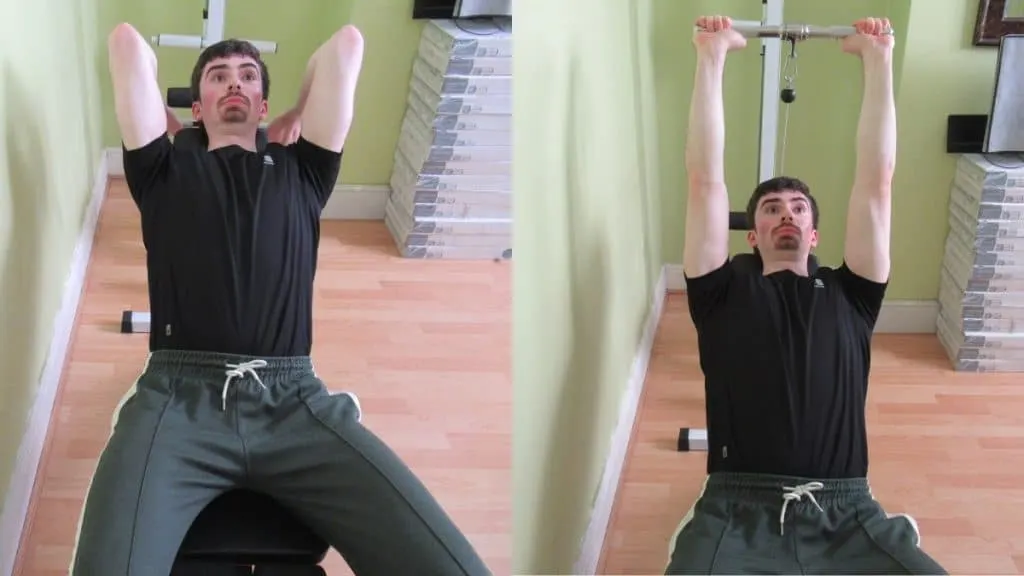
- Wheel an adjustable bench over to a cable machine so that the backrest is facing the pulley.
- Set the back pad to a 45-60-degree angle.
- Connect a straight or curved bar attachment to the low pulley.
- Grab the bar with a firm grip and walk it out to the bench. As you sit down on the bench, move the bar behind your head, and then lie with your back against the pad.
- Flex your triceps to lift the bar up. Keep going until your elbows are locked out.
- Lower the bar behind your head in a controlled manner until you feel an intense stretch in your triceps.
- Squeeze your triceps once again to lift the weight. Keep going until your elbows reach complete extension. Then, lower the bar to finish the rep.
- Perform 3-5 sets of 8-15 reps in total.
Incline cable triceps extension variations
There are 5 additional ways to do cable incline tricep extensions. This section shows you how to do them all and discusses the pros and cons of each variation.
High pulley cable incline tricep extension
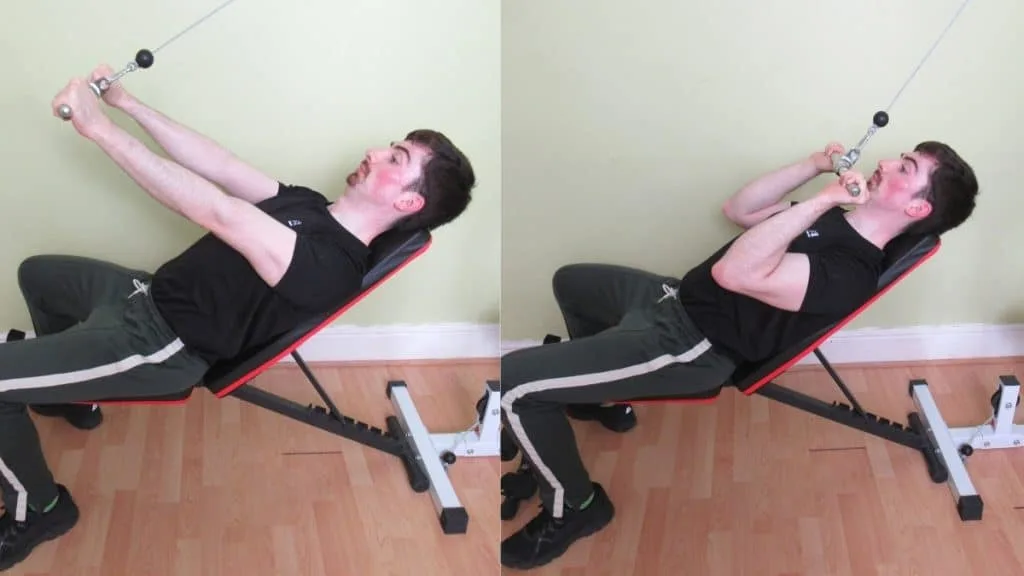
The high pulley cable incline extension is a popular type of cable lying triceps extension but one which is inferior to the low pulley version when it comes to triceps hypertrophy.
When you do an incline cable extension from a high pulley, you rob your triceps of that deep eccentric stretch that’s so crucial for muscle growth. The reduced demand during the eccentric phase of the rep makes the high pulley version easier, which is perhaps why many lifters gravitate toward it.
While the high pulley incline cable tricep extension still trains the target muscles reasonably well, it’s a rough equivalent of a skull crusher in terms of lifting technique, which naturally means that it places a lot of stress on your elbows.
With the recommended low pulley variation, on the other hand, you have the option to bring the bar behind your head (rather than lowering it to your forehead), which, in addition to dramatically accentuating the eccentric stretch, reduces the amount of torque going through your elbows.
As if the high pulley incline cable extension wasn’t already defeated enough, the exercise also demands a lot of core strength because the cable is always trying to pull you off the bench. Having to flex your abs so much just to keep your torso in place makes it harder to focus on training your triceps. In other words, it defeats the purpose of this isolation exercise.
One arm cable incline tricep extensions

Performing an incline single arm overhead cable tricep extension helps you to develop proportional upper arms by ensuring that both of your triceps receive similar amounts of stimulation.
When your brain only has to focus on lifting one limb at a time, it’s much easier to bring forth a solid mind-muscle connection and make the most of every rep.
You can also use a variety of attachments for the one arm incline cable tricep extension. A single tricep rope is most recommended because it enables you to keep your hands in a wrist-friendly neutral position.
But if you don’t have a single rope attachment, then you can also use a single cable handle or even go attachment-free by grabbing the small rubber balls on the end of the cables.
The only drawback of the exercise is that it takes longer to perform than the two-arm version because you’re training each side separately. But if you’re in pursuit of maximum upper body aesthetics, then a small amount of extra gym time will likely be worth the resulting improvement in triceps symmetry.
Reverse grip incline cable tricep extension
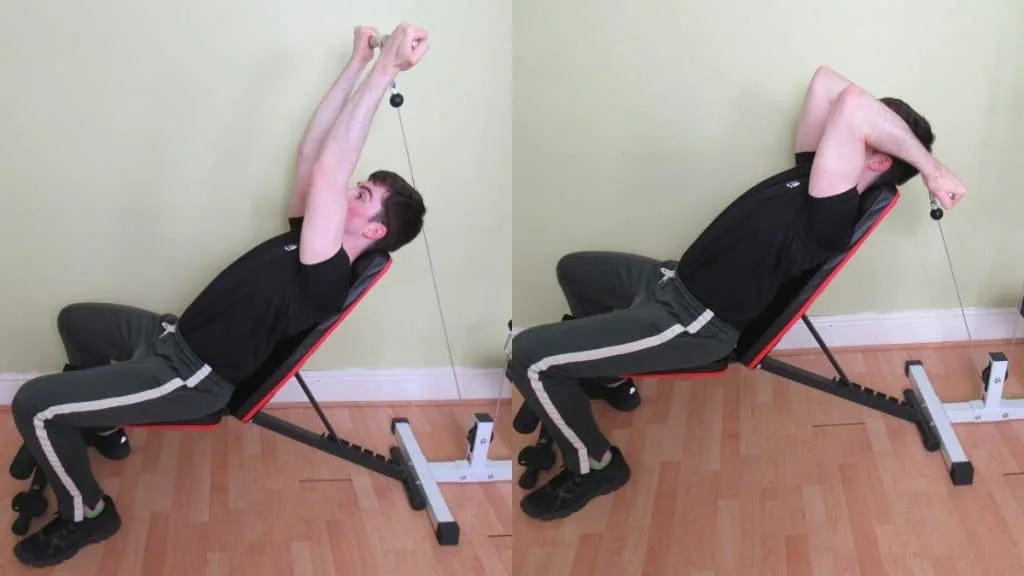
The incline cable reverse overhead triceps extension is a helpful exercise for those who struggle to keep their elbows tucked in during tricep extensions.
You see, when most people switch from a pronated grip to a supinated (i.e., reverse) grip, their elbows naturally become tucked due to their shoulders becoming externally rotated.
The catch is that since your wrist position doesn’t affect triceps recruitment, using a reverse grip doesn’t actually force you to tuck your elbows.
Furthermore, using a reverse grip will likely make you weaker because you’ll lose the ability to push into the bar with the palms of your hands, which in turn limits your ability to produce force, and thus overload your triceps with tension.
For this reason, if you plan on doing the cable incline triceps extension with a bar, it’s recommended to stick with a pronated grip so that you can lift with more power and explosiveness (the triceps is a fast-twitch muscle, after all).
V-bar incline cable tricep extension
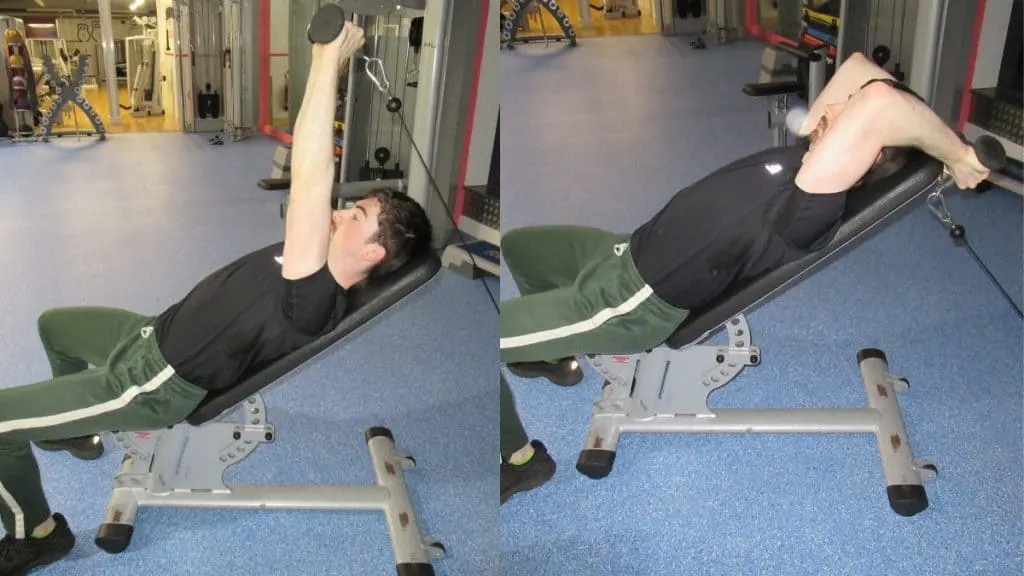
Incline v bar overhead extensions are a cross between the standard bar version of this exercise and the rope variation (more on that in a sec).
On the one hand, the v-bar enables you to lift more weight than the rope attachment because a v-bar is one solid attachment and is thus easier for your triceps and shoulders to stabilize.
Additionally, using a v-bar for the incline cable triceps extension enables you to keep your wrists in a semi-pronated position. So in this sense, the exercise is similar to incline EZ bar triceps extensions because curved bars also have wrist-friendly semi-pronated grips to make holding the weight more comfortable.
Still, the v-bar does force your wrists into a narrow, fixed position, which might cause joint pain for some people, especially those lifting heavy.
Rope incline cable tricep extensions
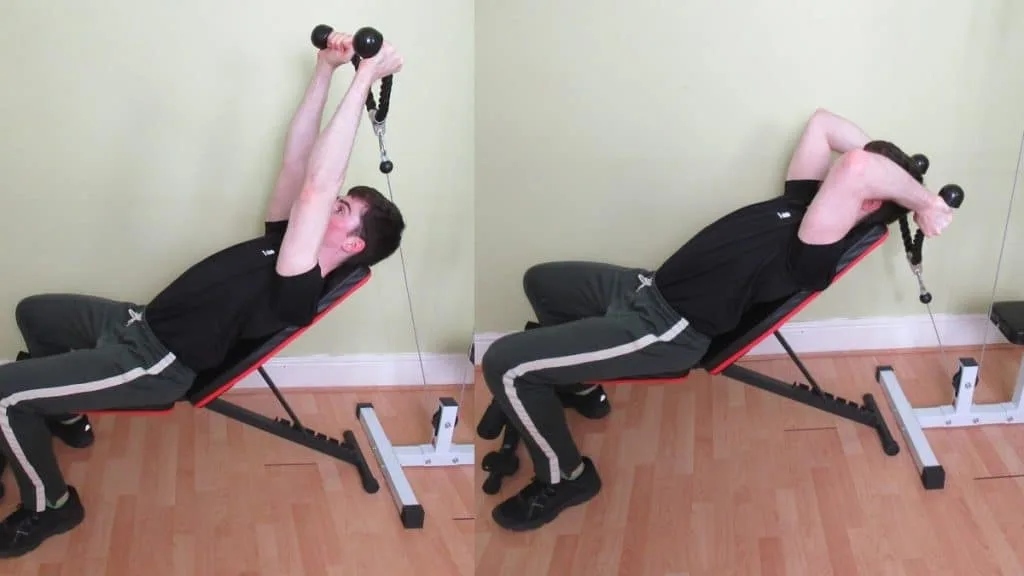
We’ve saved the best for last.
The incline cable rope extension provides the most intense peak contraction of any incline cable extension variation because you can “split” the rope at the end of the rep to make your triceps contract more forcefully.
Similarly, during the eccentric phase of the rep, you can keep the ends of the rope close together in order to get a more extensive range of motion and break down extra muscle fibers as a result.
Moreover, you can hold the rope with a neutral grip to keep your wrists out of trouble.
Better still, from a muscle symmetry perspective, you have to lock out each side of the rope separately, which encourages even triceps development.
Cable incline triceps extension benefits and effectiveness
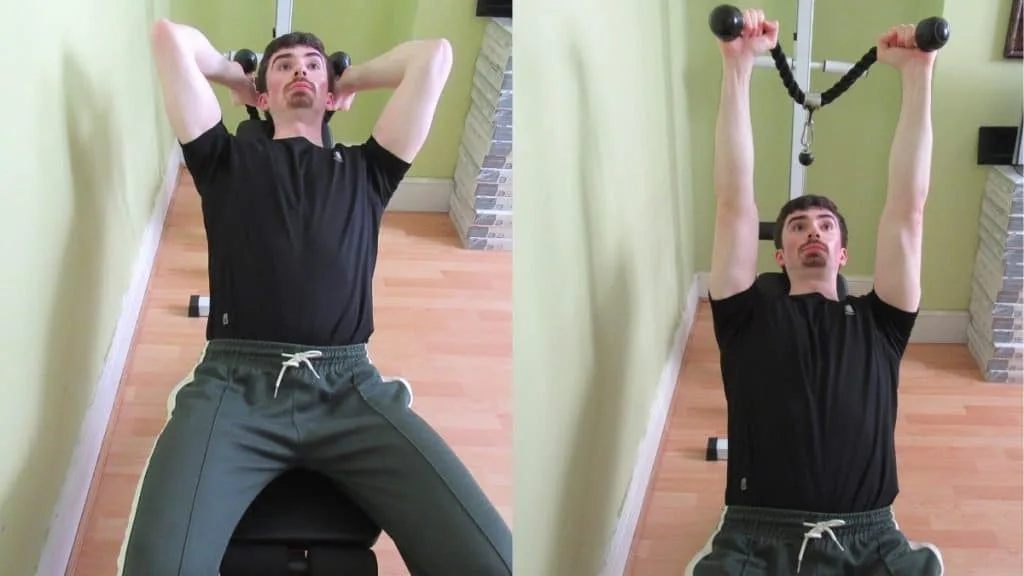
You might not think of the cable incline extension as a mass-builder. But if you increase the resistance regularly while maintaining the proper form, incline cable extensions can build just as much size as incline barbell tricep extensions.
The incline cable tricep extension is a great exercise for gaining strength because cable weight stacks tend to increase in very manageable increments. Some machines even have built-in micro plates that you can slide onto the stack to make the weight increments even more manageable, thus helping you to gain triceps strength at a faster rate.
Similarly, when you do an incline or decline triceps extension with cables, you get to challenge your triceps with constant tension because the pulley is always exerting some kind of force on your muscles—even when your elbows are locked out.
Cable incline tricep extensions also help to boost your bench press strength by making you very proficient at locking out heavy weights with your triceps (the essence of any triceps extension).
Additionally, as it’s a cross between a seated overhead cable tricep extension and a lying extension, the cable incline triceps extension offers a good middle ground for those who lack the shoulder mobility to get their arms over their heads in an upright torso position but who also don’t want to do their extensions on a flat bench.
Conclusion: Are cable incline tricep extensions worth performing?

If you want to get a great triceps pump while stimulating plenty of muscle growth in the process, then the cable incline tricep extension will make an excellent addition to your workout routine.
To focus on mass gain and strength development, do 4-5 sets of 8-12 reps with a curved bar attachment, ideally earlier on in your workout when your triceps aren’t too tired.
You could also perform the rope incline cable tricep extension at the end of your session for 3 sets of 15-20 reps to fatigue any remaining muscle fibers while getting a fantastic pump. Using the rope, as mentioned, creates a stronger peak contraction, which makes it the best choice for pump-focused tricep training.

